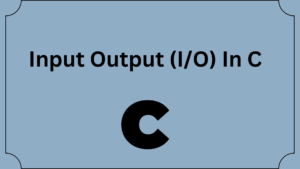In this tutorial, you will learn about the introduction to C programming language with the help of examples.
Dennis Ritchie created C as a general-purpose high-level programming language for the Unix operating system. In 1972, it was originally implemented on the Digital Equipment Corporation PDP-11 computer.
The C programming language is used to write the Unix operating system and nearly all Unix applications. C has become a popular professional language for a variety of reasons.
- Easy to learn
- Structured language
- It produces efficient programs.
- It can handle low-level activities.
- It can be compiled on a variety of computers.
Contents
Facts about C Programming Language
- C was created in order to create the UNIX operating system.
- C is the successor language to the B language, which was introduced around 1970.
- The American National Standard Institute defined the language in 1988. (ANSI).
- By 1973, the UNIX operating system was almost entirely written in C.
- C is now the most popular System Programming Language.
- The majority of cutting-edge software is written in C.
Why use C Programming Language?
C was initially used for system development, specifically the programs that comprise the operating system. C was adopted as a system development language because it generates code that is nearly as fast as assembly language code. Some instances of C usage include:
- Operating Systems
- Language Compilers
- Assemblers
- Text Editors
- Print Spoolers
- Network Drivers
- Modern Programs
- Data Bases
- Language Interpreters
- Utilities
C Program File
All C programs are saved as text files with the extension “.c,” for example, hello.c. You can write your C program into a file using the “vi” editor.
This tutorial assumes you know how to edit a text file and write programming instructions within a program file.
C Compilers
When you develop a program in C, you must compile it in order to run it. A C Compiler turns your program into a language that a computer can understand. This is known as machine language (ie. binary format). So, before you begin, make sure you have C Compiler installed on your computer. It comes with all Unix and Linux variants.
You may like:
introduction to c introduction to c introduction to c introduction to c introduction to c
JavaScript throw Statement with Example



